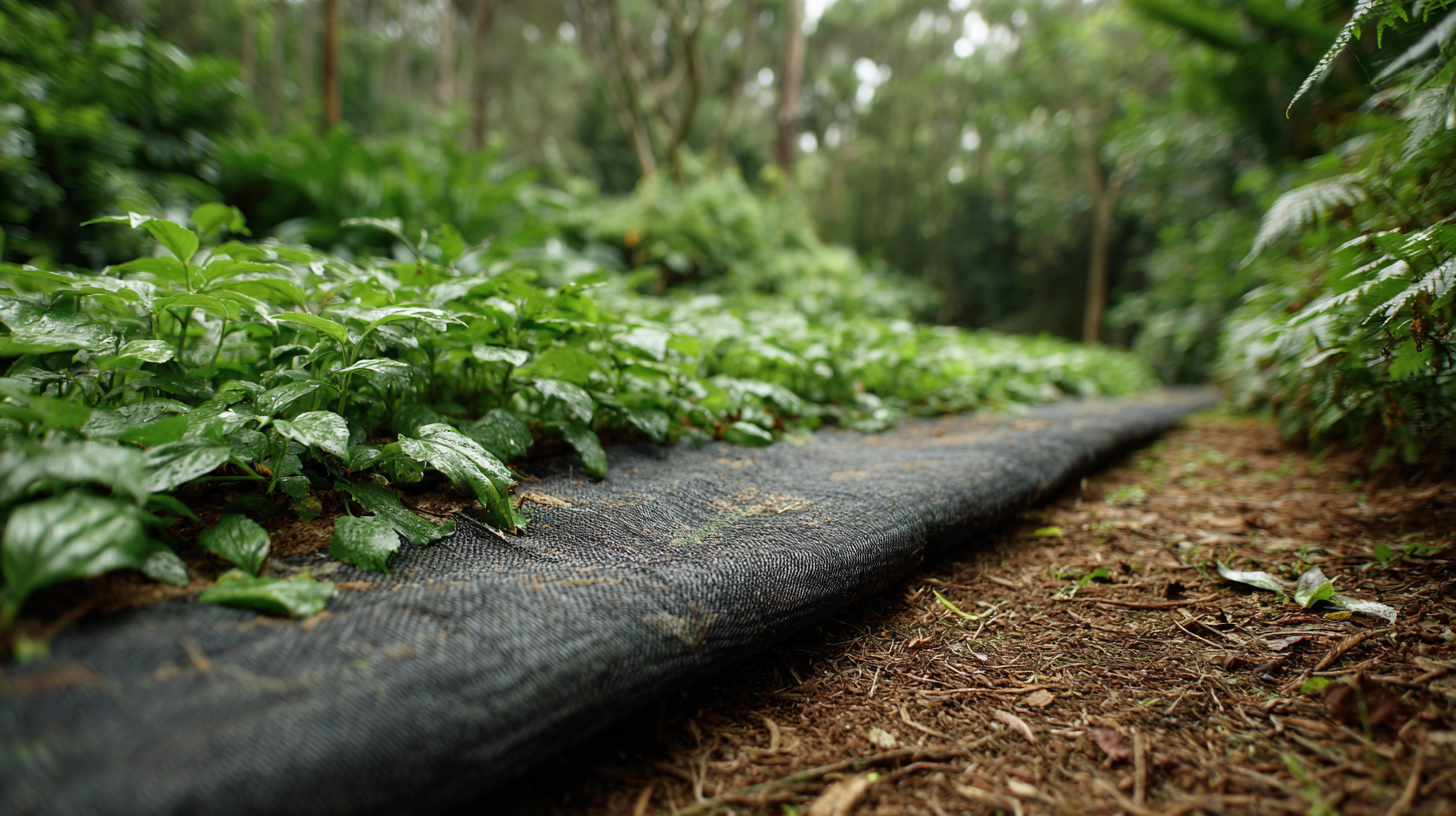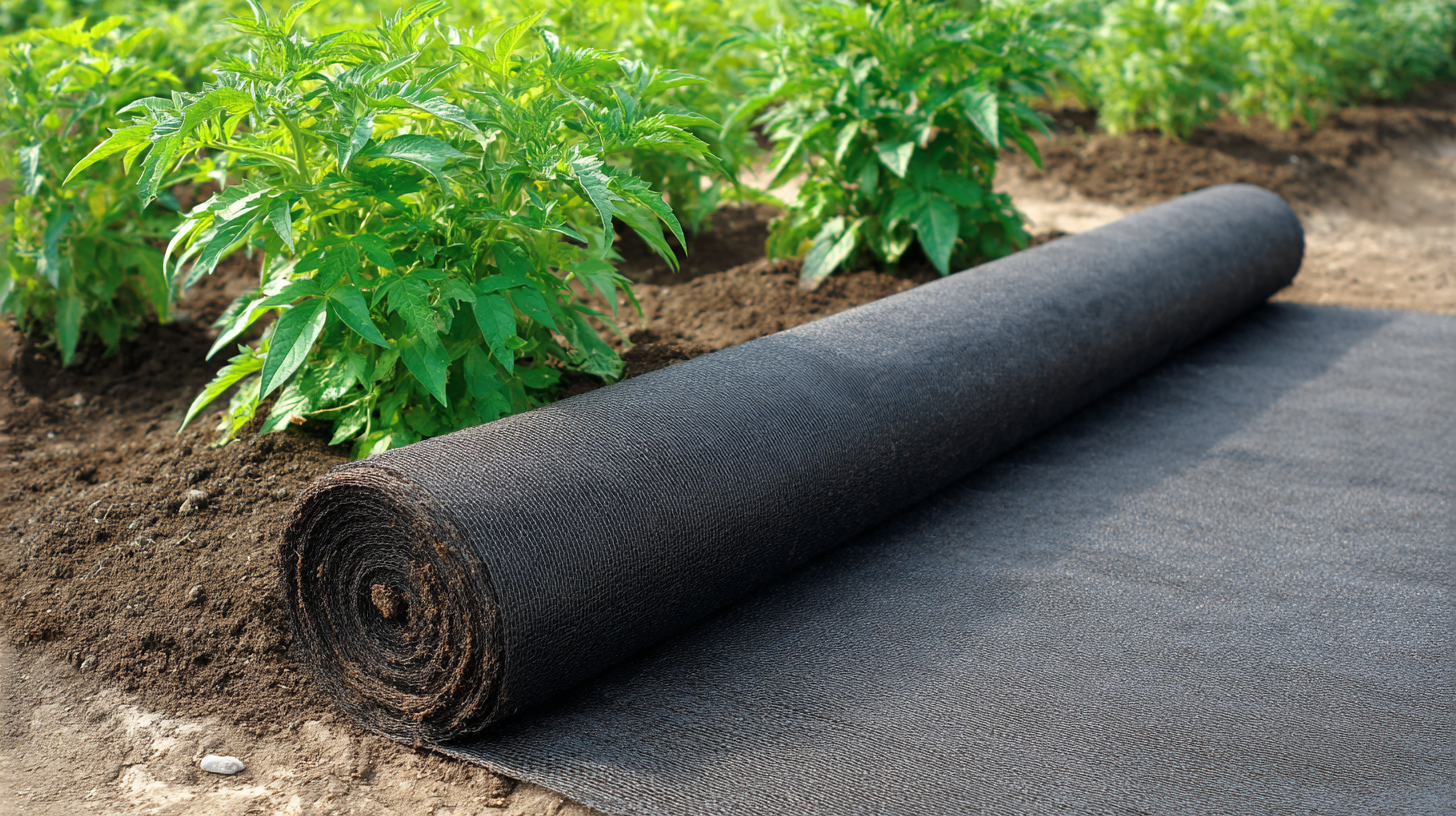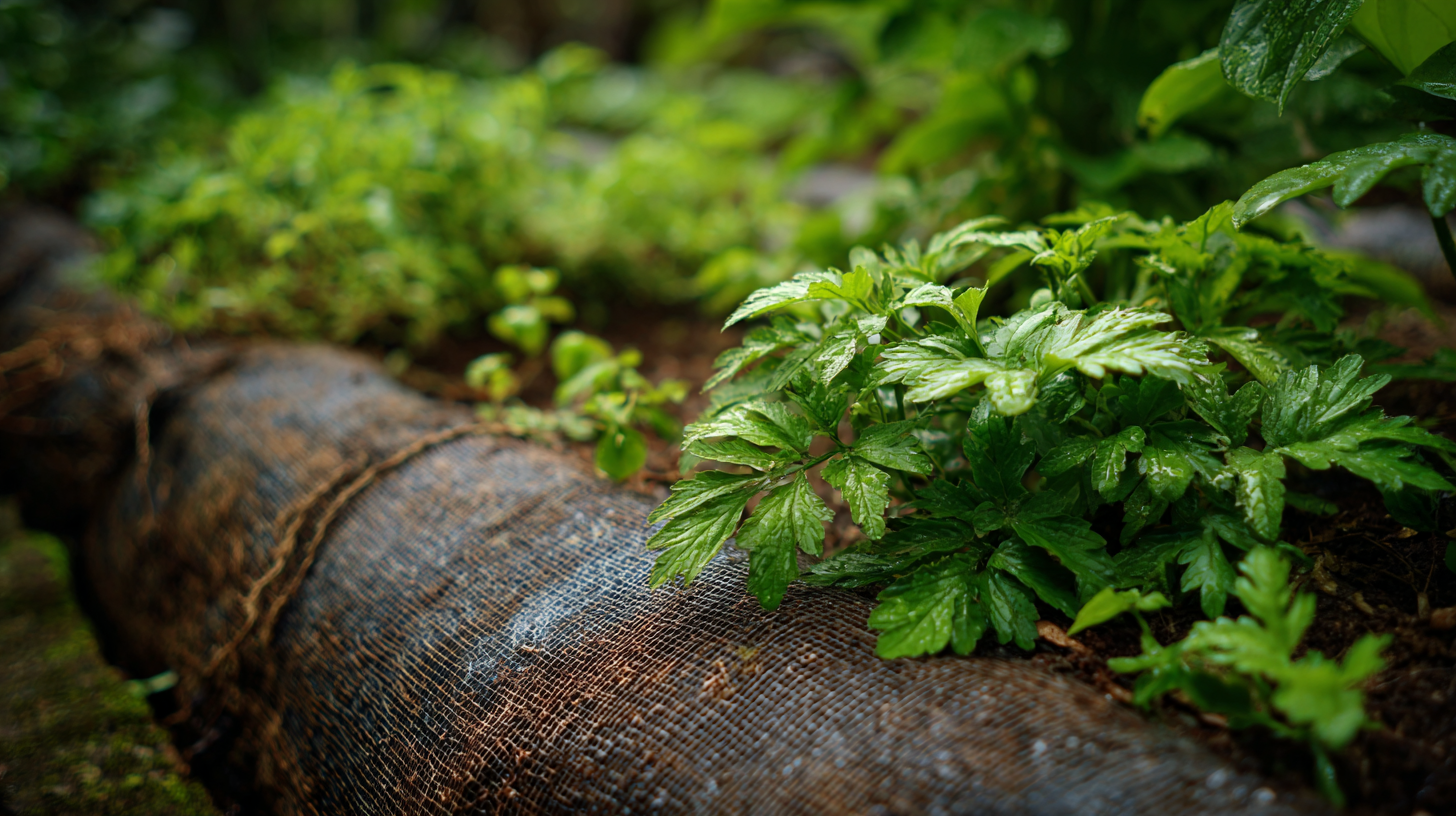Discover the Best Weed Barrier Options for a Lush and Healthy Garden
In the pursuit of a lush and healthy garden, gardeners often encounter the persistent challenge of weed management. According to a report from the National Gardening Association, approximately 80% of gardeners express that weed control is the most daunting aspect of maintaining their gardens. To combat this issue, one effective solution that has garnered significant attention in recent years is the use of a "weed barrier." By effectively suppressing weed growth, a weed barrier can promote healthier plant development and reduce the need for chemical herbicides, aligning with sustainable gardening practices.
Weed barrier expert Dr. Emily Greenfield emphasizes the importance of selecting the right materials for effective weed control, stating, “A well-chosen weed barrier not only improves water retention and soil quality but also significantly reduces the time and effort spent on weeding.” With various options available on the market, including fabric, plastic, and biodegradable materials, gardeners must navigate the diverse landscape to find the best weed barrier suited to their individual needs. This article explores the top 10 weed barrier options that can revolutionize your gardening experience and lay the foundation for vibrant plant growth.

Understanding Weed Barrier Materials: A Comparative Analysis of Types and Durability
 When it comes to maintaining a lush and healthy garden, choosing the right weed barrier material is crucial. There are several options available, each with its own strengths and weaknesses. Organic materials like mulch and straw not only suppress weeds but also enrich the soil as they decompose. However, they require regular replenishment to remain effective. On the other hand, synthetic fabrics, such as landscape fabric or plastic sheeting, offer durable long-term solutions that effectively block weeds but can sometimes restrict water and air flow to the soil.
When it comes to maintaining a lush and healthy garden, choosing the right weed barrier material is crucial. There are several options available, each with its own strengths and weaknesses. Organic materials like mulch and straw not only suppress weeds but also enrich the soil as they decompose. However, they require regular replenishment to remain effective. On the other hand, synthetic fabrics, such as landscape fabric or plastic sheeting, offer durable long-term solutions that effectively block weeds but can sometimes restrict water and air flow to the soil.
Tips: If you're leaning towards organic options, consider layering mulch with landscaping cloth for added effectiveness. For synthetic materials, ensure you select UV-resistant options to withstand the elements and prolong their lifespan. Also, remember that while these barriers are helpful, regular monitoring of your garden is still key to catching any unexpected weed growth early on.
Another essential factor is the thickness and permeability of the chosen material. Thicker barriers typically resist tearing and provide better weed suppression, while permeable options allow water to pass through, crucial for plant health. When selecting a weed barrier, consider your garden’s specific needs and the kinds of plants you’re growing to ensure compatibility and effectiveness in your weed control strategy.
The Environmental Impact of Synthetic vs. Natural Weed Barriers on Soil Health
When choosing a weed barrier for your garden, it's crucial to consider the environmental impact of synthetic versus natural options. Synthetic weed barriers, often made from plastics, can result in microplastic pollution, affecting soil health and biodiversity. According to a report by the Soil Health Institute, plastics can disrupt the soil microbiome, leading to reduced nutrient availability and impaired plant growth. In contrast, natural alternatives such as jute or coconut coir contribute positively to soil health by improving organic matter as they decompose, thus enriching the soil with nutrients.
**Tips:** When selecting a natural weed barrier, look for products that are certified organic and free from harmful chemicals. Additionally, consider layering these barriers with mulch to enhance moisture retention and prevent soil erosion.
Using natural weed barriers not only suppresses unwanted vegetation but also encourages a thriving ecosystem in your garden. A study from the American Society of Agronomy found that gardens using organic materials demonstrated a 30% increase in beneficial microbial activity compared to those with synthetic barriers. This illustrates the importance of opting for sustainable materials that support your garden’s long-term health while minimizing environmental harm.
**Tips:** Regularly monitor the effectiveness of your chosen weed barrier and adjust accordingly to ensure optimal performance throughout the growing season.
Discover the Best Weed Barrier Options for a Lush and Healthy Garden - The Environmental Impact of Synthetic vs. Natural Weed Barriers on Soil Health
| Weed Barrier Type | Material | Biodegradability | Impact on Soil Health | Cost (per square foot) |
|---|---|---|---|---|
| Synthetic Fabric | Polypropylene | Non-biodegradable | May retain moisture but can affect soil microbiomes negatively | $0.50 |
| Natural Jute | Jute Fiber | Biodegradable | Enhances soil structure and encourages beneficial microbes | $0.30 |
| Paper Mulch | Recycled Paper | Biodegradable | Improves soil organic matter as it decomposes | $0.25 |
| Coconut Coir | Coconut Fiber | Biodegradable | Good water retention and enhances soil fertility | $0.40 |
Cost-Effectiveness of Weed Barriers: Long-Term Savings versus Initial Investment
When considering weed barriers for your garden, it's vital to assess their cost-effectiveness. While the initial investment for high-quality fabric or plastic barriers can seem steep, the long-term savings often outweigh these upfront costs. By preventing weeds from sprouting and competing for nutrients, moisture, and light, a good weed barrier can significantly reduce the need for constant weeding and maintenance, leading to a healthier garden and more time to enjoy it.
**Tips for Choosing Weed Barriers:** Look for durable materials that withstand weather variations and UV exposure. Heavy-duty fabrics, though pricier, often last longer than cheaper options, making them a wise investment. Additionally, consider the specific needs of your plants; some barriers allow for better drainage and airflow, which can be crucial for certain types of vegetation.
Moreover, take note of the installation process. A weed barrier that requires complicated installation may incur additional costs if you need to hire help. Opt for materials that can be easily laid down with minimal tools. This not only saves you money but also ensures you can efficiently prepare your garden for growth with less hassle.
Measuring the Effectiveness: Industry Standards for Weed Control Efficiency
When evaluating weed barrier options for your garden, it's crucial to consider their effectiveness according to industry standards. The efficiency of a weed control system is typically measured by its ability to suppress weed growth while allowing essential nutrients, water, and air to penetrate the soil. Various materials, such as fabric, paper, and plastic, each come with specific metrics that evaluate their performance in trapping moisture and preventing weed germination.
Manufacturers often conduct studies to measure the long-term effectiveness of their weed barrier products under different climatic and soil conditions. These tests include assessing durability, permeability, and the overall impact on plant health. The most effective weed barriers create a balance between blocking unwanted vegetation and promoting a flourishing ecosystem for your garden. Understanding these metrics can help gardeners make informed decisions about which weed barrier options will best serve their green spaces, fostering lush and healthy growth.

Innovative Trends in Weed Barrier Technology: Biodegradability and Eco-Friendliness
As garden enthusiasts seek sustainable solutions to enhance their outdoor spaces, the demand for innovative weed barrier technologies has skyrocketed. Recent developments in biodegradable mulch films reflect a growing trend towards eco-friendliness and effective soil preservation. With projections indicating that the biodegradable mulch film market will grow to approximately USD 111.95 million by 2034, it’s clear that gardeners are prioritizing not only aesthetics but also sustainability.
These advancements include materials derived from natural sources, such as seaweed-based biopolymers, which offer biodegradable options that are non-toxic and environmentally friendly. Such materials provide excellent film-forming capabilities while boasting antioxidant properties that benefit the soil ecosystem. By incorporating these innovative solutions, garden lovers can create lush, healthy gardens without compromising the environment, moving towards a more sustainable future in gardening practices.
